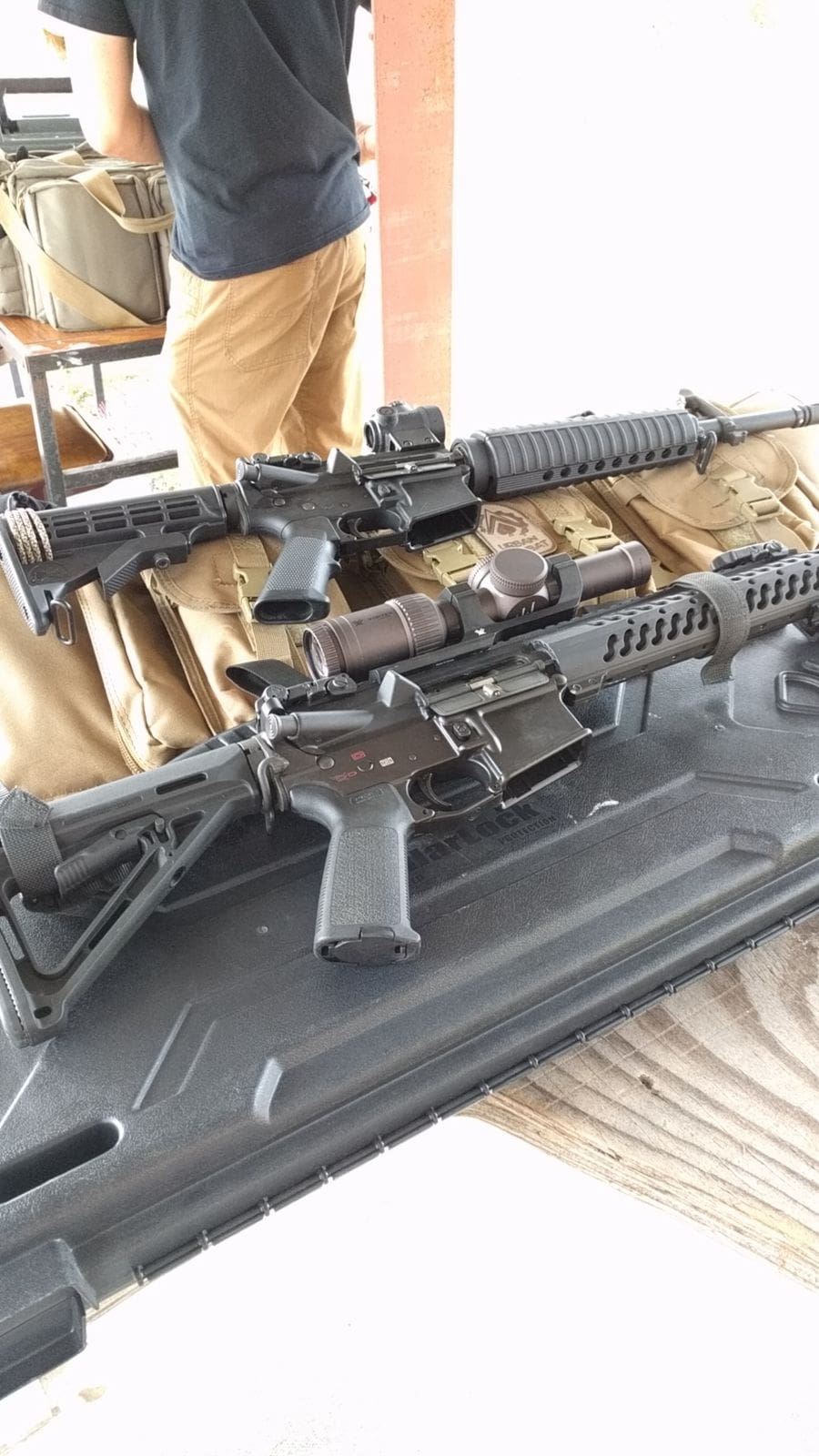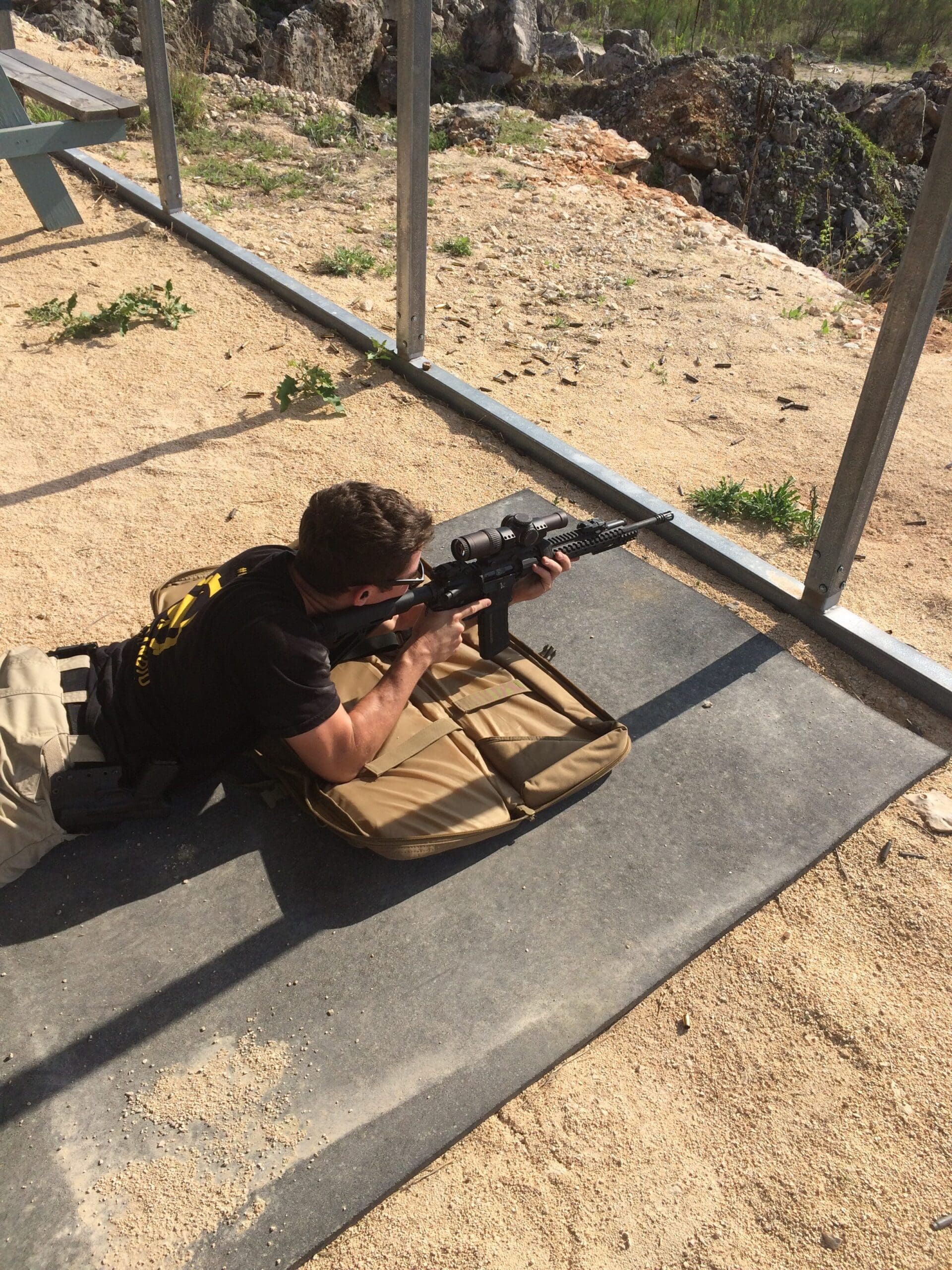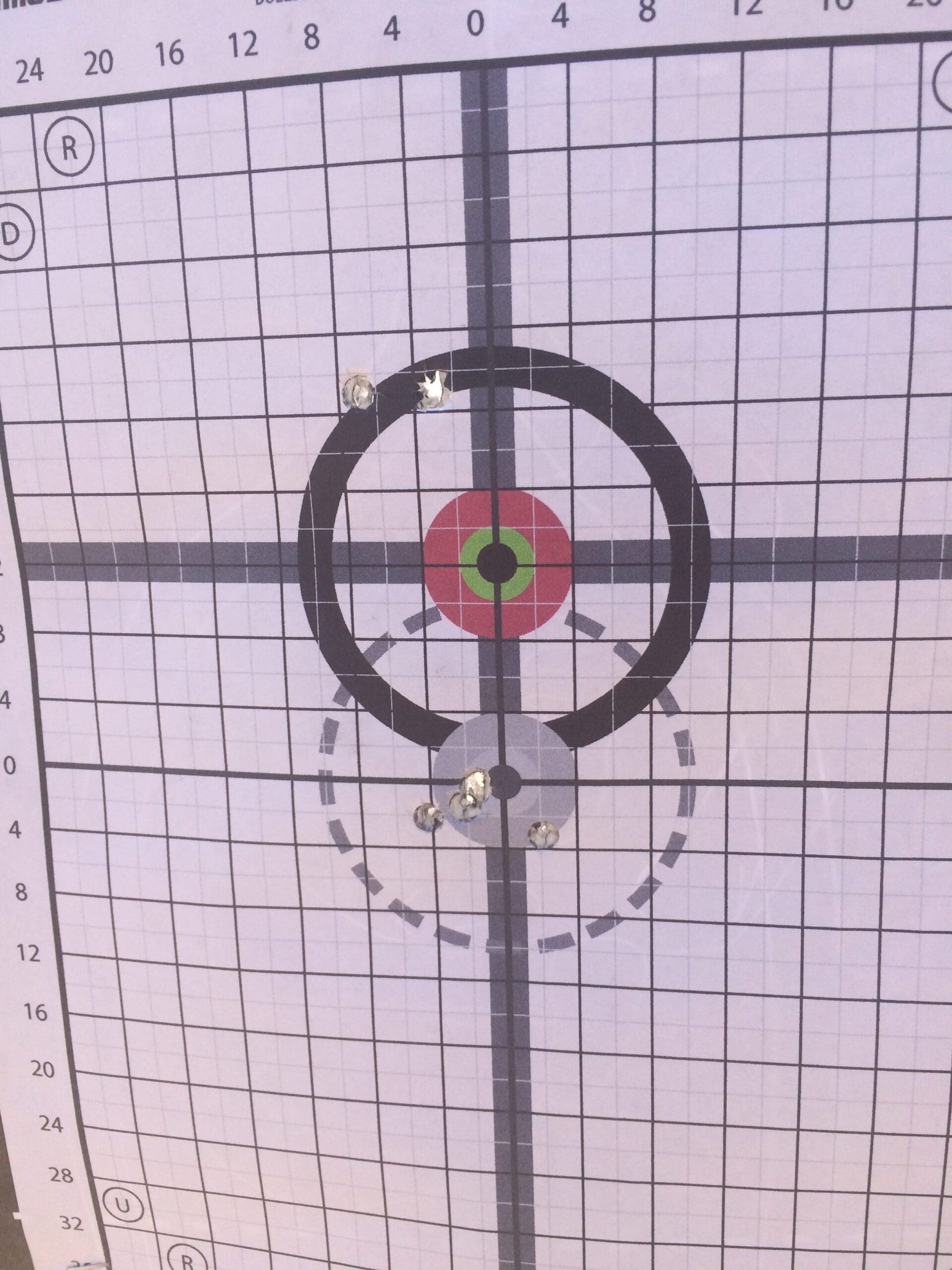The AR-15 is one of the most versatile firearms platforms in the world, available in a myriad of calibers and configurations. Without the proper optic, though, the AR’s flexibility — for hunting, self-defense, target shooting or plinking — is easily greatly diminished. Is the Vortex Razor HD Gen II 1-6×24 variable magnification rifle scope up to those jobs?
It’s certainly the right magnification. The 1-6x24mm optic is one of the most versatile configurations available, allowing for close to long range shooting in an all-in-one package.
Over the past two months I spent some serious trigger time with the Vortex Razor HD Gen II scope. I tested it from close quarters battle distances out to 550 yards. I also mounted it to my rifle for my full-day tactical rifle courses. 
The Vortex optic ships from the factory in a matte “stealth shadow” anodized finish, complete with a battery for the red dot function, an Allen wrench and a cleaning cloth.
The Razor HD Gen II offers shooters the standard elevation and windage ½ MOA adjustment turrets, protected by aluminum covers. It features an 11-setting red dot illumination adjustment. Magnification dials smoothly from a true 1x up to 6x.
The Razor HD is set to a 100-yard parallax with an adjustable diopter focus. The adjustment ring is tighter than Scrooge McDuck, but loosens up acceptably after regular use.
There are three available options for the reticle: MOA, MRAD and BDC. Testing was conducted with the MOA reticle.
The Razor uses a second focal plane (SFP) reticle, which keeps it the same size regardless of magnification. It comes with 4 MOA subtensions which enable easy holdovers, windage adjustment and distance estimation.
The optic really lives up to its “high definition” name. The sight picture was sharp and crystal clear at nearly all distances.
The red dot’s 11 brightness settings feature an an “off” click between each. It makes it fast and easy to return to your desired brightness level. A locking feature also prevents accidental adjustment.
The brightness adjustment creates options across the full range of lighting conditions, from zero light (where the reticle would otherwise be invisible) to the brightest Texas sunshine. With the red dot at low zoom, the optic can be used as a both an eyes-open reflex sight or, on higher zoom, a squinty-eyed precision optic.
The Vortex Razor HD Gen II lacks the multi-year battery lifespan of regular red dot sights. The battery drained within four days of constant-on use. On the high brightness setting, the red dot bleeds into the vertical crosshair of the reticle, distracting you from your sight picture
To test the optic I shot a preliminary zero at 25 yards for a 100-yard zero with my piston AR. After that, I verified my zero at 100 yards, zeroed the turrets, and performed a box test to ensure that optic was tracking correctly.
To check the clarity of the sight picture, I shot my AR at 100, 200, 300, 400, 500 and 550 yards, utilizing the full range of magnification adjustment. Clocking a 15-mph wind at three o’clock, I played with wind drift adjustment subtensions and holdovers as well as adjustment in the turrets.
The Vortex Razor enabled an easy first or second-round hit on all targets (nine-inch diameter steel plates). The crisp, clear picture through excellent glass and the fine reticle with small-yet-bright red dot in the center made for confident target engagement and easy precision.
With an MSRP of $1,999 ($1,399 at Brownell’s), the Vortex Razor HD Gen II Optic isn’t cheap, especially when you forget to turn the dot off and have to buy Costco-sized battery packs. It’s also a bit on the chunky side at 25.2 ounces (sans mount). But it is the last optic you’ll need if you want a high-quality, lifetime-warrantied, do-it-all optic on your do-it-all rifle.
SPECIFICATIONS: Vortex Razor HD Gen II 1-6×24 Riflescope
Hard Anodized – stealth shadow
Power x Obj. Lens: 1-6x24mm
Reticle: VMR 2 (½ MOA adjustment)
Lens Coating: XR™Plus Fully Multi-Coated
Tube Diameter: 30mm
Eye Relief: 4 inches
Focal Plane: Second
Length: 10.1 inches
Weight: 25.2 ounces
MSRP: $1,999 ($1,399 at Brownell’s)
RATINGS (out of five stars):
Fit, Finish, Build Quality * * * *
Extremely well-built. The only issue is the bleeding of the red dot into the vertical crosshair at full brightness.
Optical Quality * * * * *
The optic lives up to its HD name: extremely clear image at all distances
Reticle * * * * *
Standard and easy to use for windage and hold overs.
Overall * * * *
An endlessly useful optic — until the battery runs out. At the two-grand price point, the Vortex should come with covers and a mount. But the red dot bleed over into the reticle, limited battery life and heavy-ish weight keep this scope from achieving perfection.








#2 pencil, big chief tablet, ready to learn math. Iron sights, ready to learn to shoot. There is no doubt optics enhance the sight picture. But my eye doesn’t need batteries and I can hit with my sights.
looking for something just like this, but think ill go with the leupold. vortex makes it’s name on warranty yet the one and only time i needed warranty service on my vortex, i got the runaround from the company. Leupold on the other hand has been stellar and has simply replaced my 1980s scope with a brand new one. Plus Leupold is made in America. Most if not all of Vortex is made overseas with a majority of their products made in China.
Vortex Razor Gen2 line of scopes made in Japan (I own 1-6, 3-18, 4.5-27). Vortex Razor AMG line of scopes are USA made. When you get accustomed to using scopes like these, it is noticeable when going back to lesser scopes.
I have read that certain Viper line of scopes made in Philippines while lower end line of scopes from China.
If you can afford a $1400 scope, I’m guessing battery costs are the least of your worries.
“If you can afford a $1400 scope, I’m guessing battery costs are the least of your worries.”
Yeah, but the technology clearly exists for multi-year constantly-on battery life in a red dot optic.
And at that price point, a 4 day lifetime on the battery is ridiculous…
Kreighoff owners beg to disagree–
“$20 for Win shells at Wally World? Call out the Marines….”
An LPVO is an entirely different design than a red dot, and uses a different LED module. I know everybody wants a battery life measured in years on every single optic, but we are still bound by the laws of physics when designing products.
You can use a very efficient LED in a red dot optic because the LED is projected directly onto a parabolic lens. The LED light on the Razor is run through a fiber optic, which is run behind the reticle, then cut at an angle on the end which is the dot you see. Because of that, you lose 1/2 of your visible light right off the bat, so you need a much more powerful LED module to start.
Totally different design, requires a totally different LED. You’ll see other manufacturers LPVOs have similar battery life numbers for the same reasons.
Right on Jack. Techno wizards beware ! Us old farts may be old, but our equipment is proven and won’t need more electricity or a new App to get er done !
I believe it’s important to be proficient with the fundamentals but at the same time I have no issues with embracing technology because it’s makes things easier.
Am I the only one who is just not crazy about that color? I guess I just like a black scope on a black gun.
Imagine that, a $1400 1-6x scope, from a serious manufacturer turns out to be good. Shocker. A more useful article would be to compare this to their strike eagle 1-6 and tell me all the reasons the more expensive scope is better.
I don’t mind paying $1400 for a scope over a $300 scope, but it should be an easy thing to display and describe for all to see.
Nice optic, but I can’t justify the cost compared to Vortex’ own $330 1-6x Strike Eagle. The Razor is 424% more expensive yet it only offers incremental improvements. The Razor glass is unquestionably better. However, the Strike Eagle glass isn’t bad. I’m a photographer and I would not use Strike Eagle glass as a camera lens because in high contrast situations it starts to get purple fringing at about 3x which becomes quite pronounced by 6x. While that is unacceptable for a photography it is hard to think of real world shooting situation where it would make any difference whatsoever. The Razor turrets are an improvement, depending on what you are using them for. The reticle illumination knob has off positions between each on setting, which is a good thing. Except illuminating the reticle is unnecessary in daylight, so I don’t often turn mine on. And in the Strike Eagle’s favor, its BDC reticle is better than any offered with the Razor. So wile I can appreciate the Razor II’s refinements, they just aren’t worth the extra $1,070.
I spent $1k for a very nice Leuopold scope for my Model 70/300 Win Mag and I have to say it is a fantastic piece of optics. I also found that I like my $300 Bushnell on my 30-06 better and I am just as accurate with it. I am not going to ding on someone for going with the Vortex but with today’s production techniques inexpensive optics are more than adequate for any use.
You did not really answer the relevant question. Why is this better than my Vortex Strike Eagle 1-6×24 or my Burris MTAC 1-6×24. Both are great, and 1/4 the price. The Nikon P223 2-8×40 is pretty darn good good.
I think the Primary Arms Platinum 1-8x is a better and more versatile scope for the money. It’s also FFP and has the excellent ACSS reticle and it’s mil / mil. It costs about $100 less.
You could get a bit less optical clarity and get the Primary Arms 1-8x 2nd focal plane as well. It’s about 10 ounces lighter, has more magnification, and costs about $900 less. There’s also the PA 1-6 ACSS, which is one of the best deals ever on an optic and runs about $269.
I also really like the Burris XTR II 1-8 scope, for those who like things made in the USA.
I like all the Vortex optics I’ve used but at this weight and price point I think I’ll stick with the VX3-i from Leupold. $400, 2.5-8x 30 at a touch over 11oz.
Hilariously I use that on my AR but a Vortex Viper PST 6-24×50 on my current long range build.
Serious question; why is the battery life on illuminated scopes (even high end one like this) so short. Even budget red dots now have battery life measured in years. If there was a illuminated scope with a battery life of at least a year, I would probably use it over my Aimpoint.
I have really been watching my purchasing power for made in America products only if it can be done.
leupold vx6, weights less than one lbs and costs about half of the price. You need to buy the red firedot illuminated versions because their center dot is visible under the brightest sunshine.
Jack Roberts Fudd logic at its finest. Who needs electricity, I can see fine with a candle!